
YOUR CHILD’S ‘CLASSROOM READINESS’ CHECKLIST
THE POWER OF SAYING “LET’S TAKE A BREAK” WHY TEENS NEED MORE SLEEP
SPOTTING NUTRIENT DEFICIENCIES EARLY
EDITOR’S PICKS FOR THE NEW SCHOOL YEAR


YOUR CHILD’S ‘CLASSROOM READINESS’ CHECKLIST
THE POWER OF SAYING “LET’S TAKE A BREAK” WHY TEENS NEED MORE SLEEP
SPOTTING NUTRIENT DEFICIENCIES EARLY
EDITOR’S PICKS FOR THE NEW SCHOOL YEAR





EDITORIAL
Editor: Ella Naseeb Ryan ella.ryan@cpimediagroup.com
Online Editor: Daniel Shepherd daniel.shepherd@cpimediagroup.com
ADVERTISING
Group Sales Director: Liz Smyth liz.smyth@cpimediagroup.com
Sales Director: Mathew Tharakan mathew.tharakan@cpimediagroup.com
Sales Director: Gill Fairclough gill.fairclough@cpimediagroup.com
Sales Director: Carol Owen carol.owen@cpimediagroup.com
Sales Manager: Yash Gehlot yash.gehlot@cpimediagroup.com
Consultant: Ivan Grbic ivan.grbic@cpimediagroup.com
MARKETING, DISTRIBUTION & SUBSCRIPTIONS info@cpimediagroup.com
DESIGN
Froilan A. Cosgafa IV
FOUNDER
Dominic De Sousa (1959 - 2015)
PRINTED BY Wellpack Printing Press LLC
FOR OTHER ENQUIRIES, PLEASE VISIT: motherbabychild.com
MBCMagazine
PUBLISHED BY
HEAD OFFICE: Office 1307, DSC Tower, Dubai Studio City, Dubai, UAE P.O. Box 13700
Tel: +971 4 568 2993
Email: info@cpimediagroup.com
A publication licensed by Dubai Production City, DCCA © Copyright 2025 CPI Media Group FZ LLC. All rights reserved.
While the publishers have made every effort to ensure the accuracy of all information in this magazine, they will not be held responsible for any errors herein. cpimediagroup.com
Hello Mum!
As the holidays begin to wind down, many parents find themselves caught between the lingering heat and the looming return to routine. It’s suddenly that time again - school shoes and uniforms are being tried on and the calendar is filling up fast!
To make August a little smoother, you’ll find my top back-to-school recommendations on page 49. From wardrobe staples to comfy backpacks and healthy snacks that work for everyone, I’ve rounded up my favourite items to help your family start the term in style.

Our homes often take the brunt of the chaos, so on page 41 we’ve got clever tips to organise your space for the school season. From entrance way hacks to lunch-packing zones that’ll keep weekday mornings flowing, I hope you’ll discover some useful pointers.
If you’ve got a little one about to begin school, we know how big that first day can feel. It’s a huge milestone! Beyond new uniforms and pencil cases, how can you tell if your child is truly ready for the classroom? From shoes they can put on themselves to understanding instructions, we walk through a practical ‘school readiness’ checklist on page 34 to help you prepare.
For families juggling big feelings, on page 26, we look at how simply saying, “Let’s take a break” can help kids regulate their emotions, reset in the moment and return to tough situations with more calm. It’s a brilliant parenting phrase that works magic in tricky moments!
And for the physical side of the transition, don’t miss our feature on early signs of nutrient deficiencies on page 13. If your child’s energy has dipped or they’re struggling to focus, it might be more than just post-summer blues. The great thing is that knowing what to watch for means you can catch any issues early and support your little one’s health before any real problems take hold.
Older kids can face a different kind of challenge. If your teenager is constantly tired, struggles to wake up in the morning, or seems to sleep all weekend long, you’re not alone! But tired teens aren’t lazy - they’re growing, developing and navigating more than we realise. On page 28, we dive into why your teen needs more sleep than you might think, especially as they return to the term-time schedule.
Over on page 37, we explore why making the most of the final days of summer with a relaxing local getaway is so beneficial - just ahead of the back-to-school rush. It’s a wonderful chance for your family to walk into the new term feeling refreshed.
Wherever you are in the back-to-school journey, this issue is here to help you settle in - but as usual, I won’t give everything away all at once. Instead, I’ll leave it up to you to discover this issue for yourself!
Happy reading!
Ella Editor
Mother, Baby & Child Magazine

I’m so excited to share a genuinely wholesome way to help little ones feel more calm and creative with Happy Feet ‘Little’ Yogis - a beautifully designed kids’ yoga colouring book by Dubai-based wellness coach, Brinda Hora.
Her aim is to make yoga accessible, joyful, and inclusive for all ages - which is definitely a mission I can get behind! This isn’t just another activity book. It’s a gentle introduction to mindfulness, body awareness and movement for children aged 3 and up. Each page pairs fun yoga poses with affirmations, journaling prompts and playful illustrations that kids can colour, helping them build up their focus, coordination and emotional understanding, all while having fun.
Best of all, the book comes with a QR code linking to real-time yoga videos led by Brinda and her students - turning your living room into a mini yoga studio! Priced at AED 25, it’s an ideal pick for mindful playdates, rainy afternoons or family wellness time.
Available now on Amazon.ae, Noon and Jashanmal, and soon at Kinokuniya, Magrudy’s, Borders and more.





If you’re a burger lover who also loves a little culinary adventure, ALBA Street at Social Distrikt just might be your new go-to. Mixing street food flair with fine-dining finesse, ALBA Street now has a dedicated burger menu that’s anything but ordinary. Think melt-in-your-mouth A5 Wagyu beef, layered with house-fermented kimchi, or a golden, panko-crusted salmon fillet in seasoned sushi rice buns. Every burger comes with interesting and unusual flavours and can be teamed with Alba’s signature sweet potato fries dusted in spicy Japanese seasoning. The crowd favourite seems to be the crispy Yuzu Chilli Chicken burger - tangy, crunchy and deeply satisfying in all the right ways.
With its graffiti-splashed interiors, open kitchen and izakaya-style atmosphere, ALBA Street isn’t just a place to eat - it’s an experience!
Dine in or order via Talabat, Deliveroo or Careem.
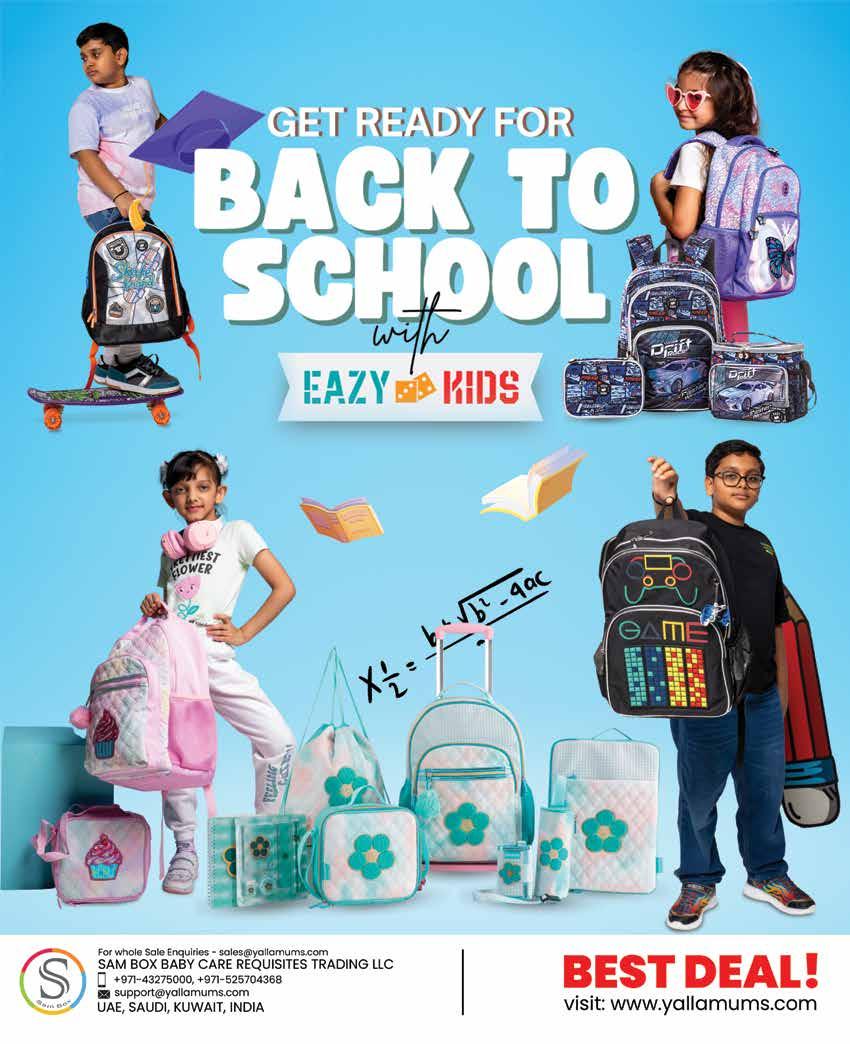



Guided ice baths; Omakase-style family dining; creative workshops for kids and more!


There’s a reason Jumeirah Al Qasr’s Saturday brunch has earned its reputation as one of Dubai’s most memorable. Set within the grandeur of this Arabian-inspired resort, it combines elegant interiors with a family-friendly energy, and the newly launched summer edition brings a fresh twist to a classic favourite.
Taking place in a beautiful, glass-enclosed space, the brunch is bathed in natural light while remaining blissfully air-conditioned. It’s an ideal setting for parents looking to escape the heat without sacrificing the atmosphere. Outside, the views of still waterways and lush gardens set a relaxing tone, while inside, the generous layout moves seamlessly through a series of carefully curated live stations.
The experience begins at the oyster and seafood bar, where fresh oysters from Dibba Bay are shucked on the spot. Around it, there’s a treasure trove of delights - Omani lobster, king crab, octopus and salmon gravlax. The sushi and sashimi counters are equally tempting, offering dragon rolls, spicy tuna, hamachi and more, all sliced fresh and artfully displayed.
For those who lean towards lighter fare, the salad station is refreshingly balanced. Classics like fattoush and tabbouleh sit alongside unique options such as pomelo shrimp and lime-ginger beef. Paired with the in-house bread station - featuring
truffle baguettes and jalapeño cornbread - it’s a flavourful start that caters to all preferences.
The Asian counter continues the indulgence with steamed dim sum, black pepper beef, miso-glazed cod and expertly carved Peking duck. And just next door, the carvery offers a traditional touch with dishes like beef Wellington, slow-cooked rib-eye and rosemary potatoes that are as satisfying as they sound.
You’ll also find a comforting mix of pasta, pizza and Indian specialities, with creamy pesto rigatoni, filo pastry pockets, chicken tikka, dal makhani and more. It’s the kind of variety that makes this brunch feel generous without being overwhelming.
As you might expect, the dessert room is an experience in its own right. From blueberry cheesecake and pistachio baklava tart to chocolate kunafa and a flowing chocolate fountain, there’s something to satisfy every sweet tooth. Children will love the mini ice cream cones from the vintage-style cartan instant hit with little ones (and let’s be honest, grown-ups too).
The overall vibe is calm, refined and surprisingly child-friendly, making it perfect for parents who want to enjoy a lovely meal while their little ones explore new flavours. From slow-roasted meats to dim sum and decadent desserts, this is a brunch experience that lets you escape the heat and soak in summer in style-without stepping outside.
Location: Jumeirah Al Qasr
Timings: Every Saturday, from 1 pm - 4 pm, until 27 September
Pricing: AED 425 with soft drinks, AED 545 with house beverages, AED 645 with sparkling grape, AED 745 with bubbly, AED 300 per child aged 7 - 11, and children under 6 dine free.
If you’re looking for a place where your child can feel truly seen, celebrated and creative, Super Duper Studio in Al Quoz might just be your new favourite weekend hangout. Part salon, part art lab, and entirely designed with kids in mind, this unique space invites children to explore who they are through colour, crafts and good old-fashioned play.
At the heart of the experience is the DressUp Salon, where children can choose from a menu of glittery, colourful styles. Think rainbow braids, temporary hair colours, tinsel extensions and sparkle tattoos. From first-haircut moments to bold new looks, it’s all about encouraging kids to express themselves in whatever way feels fun and exciting to them.
There’s also nail art, sticker stations and face painting, with no pressure to sit still or be ‘perfect’ - just an invitation to explore and play! A creative haven for kids who love to sparkle, style and express themselvesthis Al Quoz studio is all about confidence, colour and fun.
Beyond the glam, the Design Corner is where imaginations run wild. Kids can get stuck into making capes, custom t-shirts, tutus or even embellishing denim jackets. Every creation becomes a wearable masterpiece they can take home, wear proudly, and remember as part of their own creative journey.
It’s hands-on, it’s messy in the best possible way, and it offers something more than just an afternoon out - it gives children a real sense of ownership over what they’ve made.
This August, Super Duper Studio has teamed up with thejamjar to run two interactive creative workshops, perfect for children aged 5 to 10.

On August 5th, little ones can design and decorate their own guitars, then take the stage for a mini performance!
On August 7th, expect glitter, wing-making, dress-up and magical vibes all around.
Each session runs from 4 pm to 5:30 pm, costs AED 200 and includes all materials, a take-home craft, glam session and a treat from House of Pops. Spots are limited, so booking early is a good idea.
Parents can also book custom party packages starting at AED 225, complete with glam zones, DIY crafts, stage shows,
and keepsake photos. No two events are alike - because no two kids are.
“We created Super Duper Studio to give children a space where they feel seen, celebrated, and completely themselves,” say co-founders Priyal and Iram. “It’s a space where creativity isn’t just encouraged, it’s the main event.”
Whether you’re dropping in for a sparkle session or planning a creative celebration, Super Duper Studio is where creativity takes centre stage and every child gets to shine.
Location: Goshi Warehouse City, Al Quoz, Dubai
Pricing: from AED 225 per child
For bookings and more information, visit superduperstudio.ae or contact +971 50 186 4998

Reset your system and build resilience, one icy breath at a time, at this sky-high wellness ritual hosted by AURA and Bioniq.
AURA is the world’s first and highest 360-degree skypool with unparalleled views of Dubai. Here, you and your friends will be transported to an island in the sky - on the 50th floor of the Palm Tower!
If you’re looking for something more energising than your typical Saturday morning routine, the AURA x Bioniq Ice Bath Workshop might just be your new weekly ritual. Held every Saturday from 7:45 am to 9 am at the iconic Skypool, this 75-minute session combines movement, meditation and breathwork, followed by a guided plunge into a rejuvenating ice bath. The workshop is led by a certified Wim Hof instructor, and is perfectly designed to boost your immunity, reduce your stress and build up mental clarity.
After the cold immersion, you’re invited to wind down with a wholesome breakfast in AURA’s serene indoor lounge. Thanks to a partnership with Bioniq, the breakfast is now supercharged, with the option to add wellness favourites like CREATINE and
At Kasumigaseki, nestled discreetly in Dubai, dining becomes an act of trust. This serene Japanese restaurant invites you to experience the refined ritual of Omakase - a multi-course tasting menu left entirely in the hands of the chef.
Helmed by Chef Keigo Abe, whose career spans some of Japan’s most revered kitchens, the experience is steeped in tradition and subtlety. You are encouraged to surrender expectations and simply enjoy the unfolding. Think silken chawanmushi, delicately prepared sushi, grilled morsels kissed by charcoal, and rich broths that warm from within. It’s not just a meal - it’s a meditation.
Menus shift with the seasons, the catch of the day and the chef’s inspiration, meaning no two visits are quite alike. Whether you choose the Signature Full Course (AED 1000) or opt for the Short Course (AED 750), the atmosphere remains hushed, elegant and purposeful - perfect for a thoughtful lunch or a memorable date night. So let go of decision fatigue and step into an intimate culinary journey where every course is a surprise and every bite a work of art.
For bookings and more information, contact reservations@kasumigaseki.ae or +971 50 186 4998.

COLLAGEN from their new ESSENTIALS line. You can also receive an exclusive discount for the personalised Bioniq GO supplement programme, making this experience more than just a wellness trend - it’s a lifestyle investment.
Location: AURA Skypool, Palm Tower
Timings: Saturdays, from 7:45 am to 9 am
Pricing: AED 375 per person (includes breakfast)
For bookings and more information, visit www.auraskypool.com.
The power of family wellness weekends; handling common baby rashes; breathwork for busy parents and more!


Nutrient deficiencies can sneak in quietly and show up as subtle signs before turning into bigger health concerns. We take a look at what to watch out for.
As parents, we want the best for our children, especially when it comes to their health and growth. However, sometimes, despite careful meals and good intentions, kids might not be getting all the nutrients their bodies need. The great thing is that knowing what to watch for means you can catch these early and support your child’s wellbeing before any real problems take hold.
Childhood is a time of rapid growth and change. Bones lengthen, brains develop, immune systems build strength and energy demands ramp up. This means children have unique nutritional needs - ones that can be missed if their diet isn’t varied or balanced enough.
When kids don’t get enough of key vitamins and minerals, it can affect everything from their mood and energy to how well they learn and fight off illness. Some deficiencies develop quickly, while others creep up over months or years. Either way, catching them early is essential.
In fact, the early stages of nutrient deficiencies often show in ways that might seem completely normal at first, like a little extra fussiness or a dip in energy after a busy day. Yet, those small signs are your child’s way of telling you their body needs a little extra care.
While all nutrients play important roles, certain ones are more commonly low in children’s diets. Let’s take a look at the main culprits.
Essential for making haemoglobin, which carries oxygen in the blood, iron deficiency is one of the most common nutritional problems worldwide and can lead to fatigue and poor concentration.
This super vitamin supports strong bones by helping the body absorb calcium. Low vitamin D can cause bone weakness and sometimes muscle aches.
Essential for building bones and teeth during growth spurts, without enough calcium, kids might be at risk for bone problems later.
Important for vision, skin health and immune function, vitamin A is a less common deficiency in childhood.

There are a multitude of B vitamins, like B12 and folate. These support energy production and brain development and are related to nervous system health.
Zinc is a mineral that helps with immune function and wound healing. It’s an excellent nutrient to consume if your child feels a cold or sore throat coming on.
Each of these nutrients plays a unique role in supporting a child’s development, and missing out on even one can ripple through their health in surprising ways. For example, a small zinc deficiency might mean more frequent colds, while a lack of vitamin A could make their skin and eyes more vulnerable to irritation. It’s all connected, which is why a balanced diet really is the best shield against these hidden gaps.
Kids don’t always say when they feel “off,” and some signs can be easy to miss or confuse with normal childhood quirks. Here are some early clues that might point to nutrient gaps.
If your child seems unusually tired or sluggish despite enough sleep, it might be more than just a busy day. Iron deficiency, for example, can cause tiredness because the body isn’t transporting oxygen efficiently. You might notice they get tired faster during play or complain of feeling weak.
This kind of fatigue isn’t the “I just need a nap” kind of tired - it’s more like their energy tank is running on empty, even when they’re resting. You might catch them sitting out of activities they usually love or needing
more breaks during school or sports. It’s subtle, but it’s worth paying attention to because energy powers everything your child does.
Pale skin or a washed-out complexion can sometimes indicate anaemia, often caused by low iron. Also look for pale inner eyelids or gums when you gently check. Skin issues like dryness, flakiness or rashes might suggest deficiencies in vitamins A or essential fatty acids.
Sometimes, these changes in skin tone happen so gradually you hardly notice them. But when you do, they can be a red flag. Pale skin isn’t just about looks - it’s a clue your child’s blood might not be carrying enough oxygen, affecting their whole body’s performance. Meanwhile, dry or irritated skin can mean their body is missing the nutrients it needs to keep cells healthy and hydrated.
Nutrient gaps can affect brain function. If your child is having trouble focusing, seems more irritable than usual or struggles with memory, it might be time to look at their diet. Low iron and B vitamin deficiencies have been linked to these changes.
It’s easy to mistake these signs for “just being distracted” or “normal kid behaviour,” but when concentration dips and mood swings become more frequent, it’s a signal your child’s brain might not be getting what it needs. These nutrients fuel the brain’s energy and help it manage emotionswithout them, even simple tasks can feel overwhelming.
Keep an eye on your child’s growth patterns. If they’re not growing as expected or hitting developmental milestones late, poor nutrition could be a factor. Calcium and vitamin D deficiencies, in particular, can affect bone growth.
Growth is one of the clearest windows into a child’s overall health. When bones don’t get enough calcium or vitamin D, it’s like trying to build a strong house with weak materials - the whole structure struggles. Delays in crawling, walking or talking might also have nutritional roots, especially if combined with other signs.
Kids who get sick often or take longer to bounce back might be lacking zinc or vitamin C, both important for immune health and healing. The immune system is a powerful but delicate machine. Without enough of the right nutrients, it’s like a fortress with missing bricks - germs find it easier to invade, and wounds take longer to close. If your child is catching every sniffle or has cuts that linger, it’s time to consider whether their nutrition is playing a part.
A sudden drop in appetite, cravings for non-food items (like dirt or chalk, a condition called pica), or digestive problems like constipation could all be subtle signs that something’s off nutritionally. Pica is particularly important to watch for because it’s a strong indicator of iron deficiency.
When the body lacks certain minerals, it can trigger unusual cravings that seem puzzling at first. Digestive troubles, meanwhile, can limit nutrient absorption, creating a cycle that’s tough to break without intervention.
If you notice any of these signs, the first step isn’t panic but observation. Keep a food diary for a week or two, noting what your child eats and any symptoms. This can help you and your doctor spot patterns.
It’s also worth booking a check-up. Your paediatrician can run simple blood tests to check for common deficiencies, like iron levels or vitamin D. This helps guide whether dietary changes are enough or if supplements might be needed. Remember, don’t start supplements without medical advice, especially with fat-soluble vitamins like A and D, which can build up in the body.
Preventing deficiencies often starts with what’s on the plate. Offering a variety of whole, minimally processed foods across all food groups is key.
Lean meats, beans, lentils, spinach and fortified cereals are good sources. Eating them with vitamin C-rich foods like oranges or tomatoes boosts absorption.
Sunlight helps the body make vitamin D, so encourage outdoor play. Oily fish and fortified milk also provide it, though some kids may need supplements in less sunny areas.
Calcium comes from dairy, leafy greens, almonds and tofu. Zinc is found in meat, nuts, seeds and dairy products.
Colourful fruits and veggies such as carrots, sweet potatoes, bell peppers and berries are rich in vitamins A and C.

Whole grains, eggs, dairy and meats offer a range of B vitamins essential for energy and growth.
If your child is a picky eater, the idea isn’t to force every bite but to create positive food experiences. Cooking together, talking about where foods come from, and celebrating small wins like trying a new fruit can open doors.
Sometimes, nutrient deficiencies are caused by underlying medical issues like absorption problems, food intolerances or chronic illness. If your child’s symptoms persist despite dietary changes, it’s important to follow up with your healthcare provider.
Nutrition isn’t about perfection or stressing over every bite. Kids grow and change quickly, and their appetites will fluctuate. Offering a balanced diet most of the time, along with plenty of love and attention, creates the best foundation.
Keeping an eye out for those early signs means you’re tuned in to your child’s needs and ready to act if something’s off. With gentle care and guidance, you can help your child thrive, nourish their body and enjoy the vibrant energy that comes from good health.

What if weekends weren’t for catching up, but for slowing down? Discover how small, mindful shifts can help your family connect and truly recharge.
Between the school run, packed lunches, emails, housework and a constant flurry of notifications, family life can often feel like a race with no finish line. By the time the weekend rolls around, we’re usually so caught up in errands and to-do lists that there’s hardly any energy left to truly rest. It’s no wonder that many parents and children alike head into Monday feeling more drained than refreshed. Yet, those precious two days hold real potential, not just to catch up on sleep or finish the laundry, but to genuinely recharge, as a family. What if weekends weren’t just about catching up or running around? What if they became a space to reset, reconnect and refuel - together?
Enter the wellness weekend, a simple shift in how we approach our time off. You don’t need a spa booking, a retreat or even a full day off-screen. A wellness weekend is about intentionally carving out space for rest, joy and togetherness in a way that suits your family’s lifestyle. It’s less about perfection and more about presence.
Wellness weekends are about creating gentle, intentional pauses in the week where everyone, parents and children alike, can shift gears, slow down and breathe. These weekends don’t have to be fancy or expensive; they just need to offer a little space to reconnect and enjoy each other’s company, free from the usual hustle.
What makes wellness weekends special is how adaptable they are. There’s no rigid formula, just a simple intention - to prioritise presence over productivity. Whether it’s a quiet Sunday morning or a full screenfree Saturday, these moments offer something families rarely get enough of - unhurried time together.
When we talk about wellness, we often picture adult activitiesmeditation apps, yoga mats, smoothies in glass jars. The truth is that kids need time to reset too. They face growing pressures from school, social circles and the constant buzz of screens, and they feel stress more deeply than we often realise. Teens, in particular, can be juggling intense academic expectations alongside emotional changes and younger children absorb the pace and tone of the household around them. If things feel rushed or disconnected, they feel it too.
Parents, of course, are no strangers to overwhelm. Between work, caregiving and the invisible emotional load that comes with raising a family, it’s easy to forget what a proper pause feels like. That’s where a wellness weekend comes in, not as another thing on the list, but as a chance to take a few things off it.
Studies back up what many families intuitively know - carving out regular time for low-pressure connection leads to stronger bonds, better communication and even lower stress levels. But beyond the research, there’s something very simple and powerful about just sitting around a table, laughing at a silly joke, or walking together with no destination in mind.
You don’t need to overhaul your weekend plans to begin. Start small. Maybe it’s a Saturday morning without screens or a Friday evening
where everyone pitches in to cook and eat dinner together, phones tucked away. What matters is setting a different tone, one that says, “This is our time.”
It helps to involve everyone in the process. Ask your kids what would make them feel happy or relaxed this weekend. You might be surprised by their answers. Often, they’re not looking for big plans or activities, just simple pleasures like baking together, reading aloud, or going to the park.
Little things can help set the scene. Lighting a candle, playing gentle music, or just opening the windows to let the breeze in can signal a shift into something softer and slower. These sensory cues help create a calm, restorative atmosphere that makes everyone more present and more connected.
One of the simplest ways to reset as a family is to head outdoors. Nature has a way of calming even the busiest minds, and for kids especially, it’s a powerful way to anchor attention and lift spirits. You don’t need to plan a full hike or drive out of the city - a short walk in a park or a quiet half hour in the garden can work wonders.
Barefoot time is a lovely, grounding ritual to try. Letting little feet touch grass, sand or soil connects children (and grownups) to the present moment. Even just a few minutes can create a sense of calm that’s hard to replicate indoors.
A family picnic is another simple but underrated weekend reset. Pack some snacks, bring a blanket, and choose a spot! There’s something about eating outdoors that makes everything feel more relaxed, and more memorable.


For younger children, turning a nature walk into a scavenger hunt can make things playful and engaging. Ask them to find leaves in certain shapes, stones of different colours or listen for birdsong. For older children or more reflective moments, you might like to try a quiet “sound hunt” - sitting in silence for a few minutes and naming the sounds that are near, and those that are far. It’s surprising what you hear when you really start to listen.
Movement doesn’t have to mean structured workouts or team sports. Family movement can be spontaneous and silly, or calm and mindful - it all counts! The real benefit lies in the shared energy and the way it helps everyone release the tension of the week.
A family bike ride or walk around a local nature trail is a lovely option if you want some fresh air and a bit of gentle exercise. If bikes aren’t practical, just walking side by side and talking about anything and everything can feel like therapy in disguise.
Indoors, turning on a favourite playlist and having a living room dance party can lift everyone’s mood in minutes. Laughter, music and a bit of movement - it’s the perfect recipe for instant joy.
For families who prefer something calmer, a short yoga video aimed at kids can become a shared stretch session. These moments encourage body awareness and stillness, offering a rare chance to slow everything down together, especially before bedtime.
Let’s be honest, prying everyone away from screens can feel like an uphill battle. However, even a single screen-free hour during the weekend can make a big difference in how connected everyone feels.
The trick is to offer something else in its place. Board games, card games or simple puzzles
are classic for a reason - they bring people together in a way that’s interactive and fun. No one has to be great at them; the point is the shared experience.
For younger kids, building a fort or setting up a LEGO challenge gives them something creative to pour their energy into. For teens, it might be helping with a new recipe or trying their hand at cooking dinner for the family.
Cooking together is, in fact, one of the best screen-free activities out there. Kids love the chance to chop, mix and (let’s be honest) taste along the way, and everyone gets to enjoy the result. Whether it’s a full meal or just pancakes in pyjamas, the ritual of preparing and eating together creates warmth and closeness that no screen can match.
You don’t need a spa voucher to feel pampered. With a few household ingredients and a little imagination, a home spa session can be both fun and relaxing for the whole family.
Start with something as simple as warm foot soaks. Add a bit of Epsom salt and a few drops of essential oil, like lavender or chamomile, are especially soothing. Kids often love the novelty of this, and it’s a lovely way to wind down after an active day.
You could also make gentle DIY face masks using yoghurt, mashed avocado or honey. Add cucumber slices for the full spa effect and play some calming music in the background. This isn’t really about skincare, it’s about creating a moment of comfort and slowing down together.
For younger members of the family, a bubbly lavender-scented bath followed by a relaxing massage with lotion and cosy pyjamas creates a sweet, sensory bedtime routine that signals it’s time to unwind.

Mindfulness doesn’t have to mean sitting cross-legged in silence. For families, it can be simple, flexible and even fun.
One easy starting point is breathing together - try inhaling for four seconds, holding for four, and exhaling for four. This kind of shared breathing helps calm the nervous system and can be surprisingly soothing for children.
Writing down three things you’re grateful for is another gentle way to build emotional awareness. Whether it’s a delicious breakfast, a sunny walk or a funny moment from the day, reflecting on what went well helps shift everyone’s focus to the positive.
You might also like to create a little “gratitude circle” at dinner, where everyone shares one thing they appreciated that day. It’s a warm, grounding way to wrap up the day, and it teaches children to find the good even in ordinary moments.
Consider creating a “quiet corner” with cushions, books and soft lighting, somewhere anyone can retreat to when they need a break. It signals that rest is valued here, and gives children a sense of autonomy around their own wellbeing.
Sometimes, all it takes to reset the mood of the household is a mini tidy-up. Physical space affects mental space, especially for kids. Your best bet is to put on some music and do a 20-minute “family tidy sprint”you’d be amazed how quickly things can get done with a bit of energy and teamwork. Maybe let kids take charge of organising a shelf, a drawer or their toy box. Giving them some control helps them feel a sense of calm, responsibility and pride.
Wellness weekends don’t need to happen every week. Life gets busy, but having one every now and then, or even building in just one wellness ritual on a Sunday evening, can make a lasting difference. The key is consistency, not perfection. It’s okay if things
don’t go to plan or if one weekend feels a little more chaotic than calm. What matters is the intention behind it - to create space for rest, joy and togetherness.
In a world that prizes busyness and productivity, carving out space to slow down with your family is a radical act of care. Wellness weekends don’t need to be fancy or expensive - they’re about remembering what truly fuels your family’s happiness.
Over time, these simple rituals, whether it’s tea in the garden, a walk at sunset or a screen-free game night, build a family culture that values wellbeing. That culture doesn’t just help everyone feel better in the moment, but rather it lays the foundation for more resilient, connected and emotionally healthy family life.
So this weekend, perhaps pause for a moment. Light a candle. Take a walk. Turn the volume down on the world outside and do something that helps your whole family feel a little lighter. After all, rest isn’t something we earn – it’s something every family needs.
Here’s a look at some of the most frequent baby rashes, what causes them and what you can do to soothe them.

Your baby’s skin is soft, delicate and oh-sokissable - which is why it’s especially worrying when a rash appears. Whether it’s redness, bumps or dry patches, skin rashes are extremely common in babies and are often nothing to worry about. Still, when your little one is uncomfortable or out of sorts, you naturally want to know what’s going on and how to help.
This is one of the most frequent baby skin
concerns. It’s usually caused by prolonged contact with a wet or unclean diaper, which irritates the skin. Look out for redness and sore patches around the diaper area, sometimes with spots or broken skin.
Your best bet is to change diapers regularly and let your baby go diaper-free for short periods. Use a barrier cream containing zinc oxide to protect and heal the skin. If the rash doesn’t improve or spreads, speak to your doctor - it could be a fungal infection like thrush.
Newborn acne is caused by maternal hormones and, while it may concern you, it’s generally completely harmless. It looks like small red or white spots on the cheeks, forehead or back. It usually clears on its own within a few weeks. Try to avoid squeezing the spots or using strong products - a gentle wipe with warm water is better.
These tiny white bumps are very common in newborns and normal. In fact, up to half of newborns have milia. With this, you’ll notice small pearly dots on your baby’s face, especially their nose or cheeks. The good news is no treatment is needed. Milia clear up naturally in the first few weeks - just keep your baby’s face clean and dry.
Often linked to family history or allergies, eczema is a long-term condition that can flare up at any time. It can be quite uncomfortable for littles ones, so it’s worth identifying early. It shows up as dry, itchy red patches, especially behind knees, elbows or on the face. The best approach is to use fragrance-free moisturisers and avoid harsh soaps or fabrics. Your doctor may suggest a mild steroid cream for flare-ups.
Hot, humid weather (especially in Dubai!) can trigger prickly heat rashes. While they can be difficult to avoid, they aren’t too difficult to manage. You’ll see tiny red bumps, often in skin folds, the neck or chest. Dress your baby in loose cotton clothing and keep them cool and consider a lukewarm bath, which can help calm your child’s skin.
Be sure to seek medical advice if your baby has a rash with a high fever, is very unwell, has a rapidly spreading rash or one that looks purple or bruised.
However, most rashes clear up with a bit of care and patience. Trust your instincts and don’t hesitate to check in with your paediatrician if something doesn’t feel rightyour peace of mind matters too!
Feeling overwhelmed? These short, calming breathwork techniques are designed to help you find peace in the mayhem of motherhood.
Between the school runs, meal planning, sleepless nights and constant multitasking, parenting can sometimes feel like one long to-do list. In the middle of all that busyness, it’s easy to forget the one person who holds it all together - you.
That’s where breathwork comes in. This simple yet powerful practice helps bring calm, clarity and balance, even on the most chaotic of days. The best part is it only takes a few minutes and can be done anywherein the car, in the shower or even while waiting for the kettle to boil.
When we’re stressed, our breathing becomes shallow and fast. This sends signals to the brain that we’re in danger, triggering the body’s fight-or-flight response - cue tension, irritability and exhaustion! By slowing down and deepening our breath, we flip the switch. The nervous system calms, heart rates lowers and the mind becomes clearer. It’s like pressing a reset button - one breath at a time. Breathwork isn’t about doing it “perfectly” - it’s about creating tiny moments of peace and presence in a very full day.
You don’t need a yoga mat or a candlelit room - just a few quiet seconds and a willingness to pause.
Used by athletes and even the military, this technique is brilliant when everything feels a bit much and you are overwhelmed.
• Inhale for 4 counts
• Hold for 4 counts
• Exhale for 4 counts
• Hold for 4 counts
Repeat four rounds and you will feel your mind start to slow down.
This is one for moments when you need instant relief! All you need to do is let out a big sigh. Then do it again - this time, inhale through your nose, then exhale with an open mouth, making a soft “haaaa” sound. It might feel silly, but it’s incredibly effective at releasing tension. Try three in a row to feel the shift.

This technique helps settle a racing mind. The ideal technique for before bed, it’s perfect for unwinding after a long day.
• Inhale through your nose for 4
• Hold the breath for 7
• Exhale slowly through your mouth for 8
Do this for between two and four rounds. It’s a great tool for calming both body and mind before sleep.
Breathwork is a gentle reminder that calm doesn’t have to come from a weekend away or a perfect routine. Sometimes, it’s just a few conscious breaths, grounding you in the present and giving your nervous system the support it needs.
So the next time you’re about to lose your patience or feel like you’re running on empty, pause. Breathe. Parenting is no easy feat and that moment of breath might just be the most restorative one of your day.
We sat down with Sharmila Raviraj this month, to chat about her experience as a content creator and a mother.
Why teens need so much sleep; a magical parenting phrase for conflict and more!
If you’ve ever fallen down a rabbit hole of baby food recipes, bingeworthy makeup tutorials or relatable parenting moments, chances are you’ve come across the warm, refreshingly real content of Sharmila Raviraj. Originally from Chennai and now raising her little one in the heart of Dubai, she shares the highs, lows and hilarious moments of motherhood - with a generous side of glam!
Hi Sharmila, could you introduce yourself to our readers?
Hi! Thank you so much for having me - it’s a pleasure to be featured. I’m Sharmila Raviraj, originally from Chennai, India, and currently living in Dubai for last 7 years with my husband and our adorable 4-year-old son. I’m a content creator and a full-time mom, and I share my journey of motherhood, lifestyle, beauty, and everyday moments online - with a mix of fun, chaos, and a lot of heart!
My content is all about being real, relatable, and a little bit glam - from the unfiltered struggles of parenting to lighthearted comedy skits with my husband and son, and even my personal self care tips. I love connecting with fellow moms and women who are figuring it out one day at a time, just like me.
Your followers adore the vibrant life you’ve built in Dubai! How has the city shaped your journey?
Thank you! That truly means a lot. Dubai has played such a big role in shaping both my journey as a mother and as a creator. It’s a city full of opportunities, diversity, and inspiration.
As a mother, I’ve found Dubai to be incredibly family-friendly. From safe play areas and parks to supportive mom communities, it’s a place where I’ve always felt encouraged and empowered. There’s such a strong focus on child development and wellness here, which has helped me explore new ways to nurture and engage with my son.
As a content creator, Dubai has given me so many opportunities to grow, and I’m truly grateful for that. I’ve had the chance to collaborate with some of the top baby brands, and that kind of exposure has been possible only because of the life and platform I’ve built here.
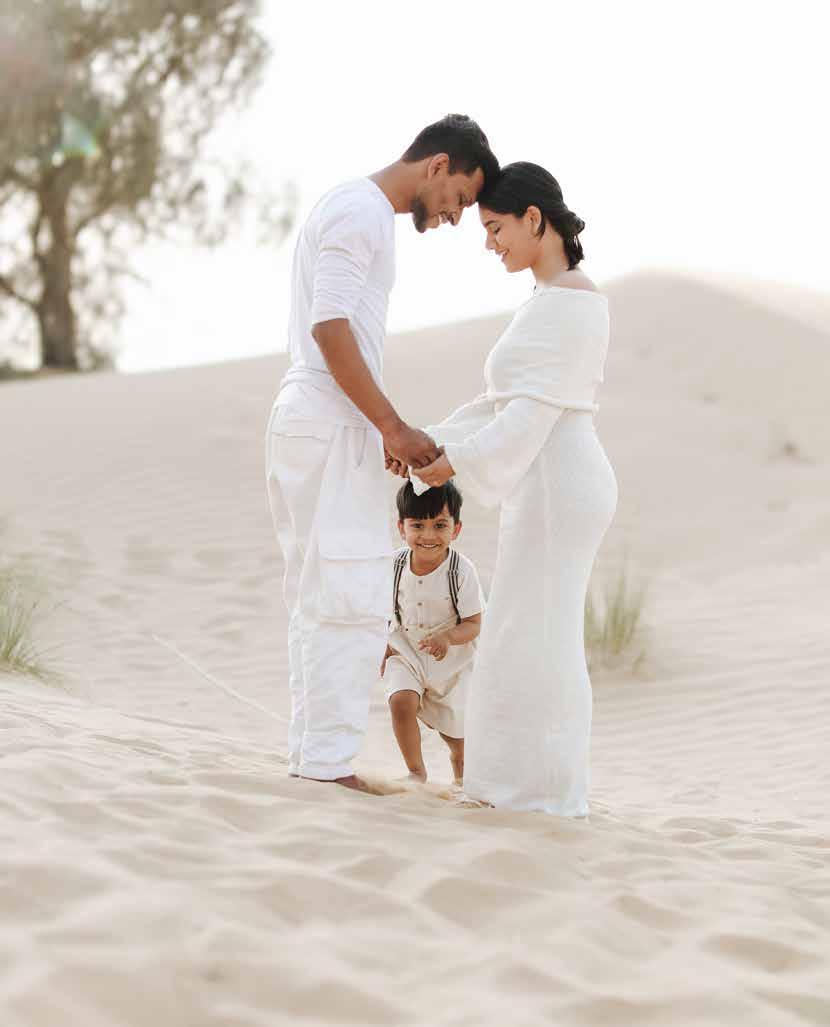
The modern vibe and multicultural audience have inspired so much of my work. Dubai gave me the confidence to share my story - not just the picture-perfect moments, but the behindthe-scenes reality too.
You juggle parenting, beauty tutorials and social media - how do you balance these roles?
Balancing parenting, personal life, and work is definitely not easy - in fact, it’s been one of the hardest parts of this journey. And to be honest, it’s still hard. But I’m managing, one day at a time. I’ve learned that to make it work, you really need strong emotional and practical support - especially from your family. I’m incredibly lucky to have my husband by my side. He supports me in everything - from shooting my content to helping with all the household chores. He’s truly been my biggest support system.
I usually start planning my day very early. I shoot most of my content in bulk so that I don’t have to worry about it daily. Then, once my son is asleep at night - when the house is finally quiet - that’s my peaceful window. That’s when I sit down to edit. Editing is actually the only time I feel completely at peace - it’s like my little escape where I can focus, create, and recharge. I also use that quiet time to schedule my posts and content. And when my husband gets back from work, he gives me some much-needed ‘me time’, which I use for brainstorming, cooking, writing, and planning what’s next.
It’s not a perfect balance - and it’s definitely not easy - but with a lot of teamwork, love, and early mornings (and late nights!), I’m somehow making it work.
How do you blend your Indian roots with the multiculturalism of the UAE when it comes to raising your little one?
I feel so lucky that my son is growing up in an environment that’s both global and inclusive. But even as we embrace the cosmopolitan vibe of the UAE, I make a conscious effort to stay deeply connected to our Tamil roots.
Tamil culture is so rich - in language, tradition, food, music, and values - and I want my son to grow up proud of that heritage. At home, we speak Tamil as our main language. I want him to feel the beauty of the language from an early age, because language is such a strong connector to identity. We also celebrate

all our Tamil festivals with full joy. I involve my son in every little detail - lighting lamps, wearing veshti, and understanding why we do what we do. These moments help him feel rooted in who he is.
At the same time, Dubai’s diversity teaches him to be open-minded and respectful of all cultures. My goal is to pass on the values of our Tamil culture - family, respect, and simplicitywhile letting him thrive in a global world.
What kind of feedback or messages from your followers have really touched your heart? Is there a story or moment that’s stuck with you?
I receive so many “me too” messages from moms around the world - and that’s the most beautiful part of creating relatable, mom-life content. One message I’ll never forget was from a mom who said, “I laughed after so many days because of your video. I was exhausted, but your content made me feel refreshed.” Messages like that truly touch my heart.
I’m especially grateful to the followers who have been with me since the very beginning of my journey as a mom creator. From different parts of the world, they’ve supported me, trusted me, and grown with me - and for that, I’m truly thankful. My followers are my biggest motivation, and I feel incredibly lucky to have such a loving, supportive community.
Your content has definitely evolved over the years - how has it changed as your child grows (and as you grow too)?
My YouTube channel and my son are the same age - both are four years old now. And when I turn back and reflect on this journey, it still feels surreal. I’ve sacrificed a lot, worked incredibly hard, and poured my heart into creating meaningful content. Me and my son - we’ve grown together in so many ways. My very first YouTube video was my birth vlog, it turned out to be a superhit! That video gave me the spark and confidence to keep going, and I’ve never looked back since.

Now, my style is a mix of fun, emotional, glam, and real - just like motherhood itself. And honestly, the journey is still evolving. I’m growing every day, and so is my content.
Let’s be real - being a mom isn’t always picture-perfect. What’s one aspect of parenting you’ve found challenging and what helped you push through it?
One of the biggest challenges I’ve faced is accepting the chaos - the toys everywhere, the never-ending to-do list, and the pressure to keep everything perfect. But I’ve realised, after a few years, these toys won’t be on the floor anymore… the mess will be gone, and everything will be organised. And in that moment, I know I’ll miss these messy, magical days.
The love, laughter, and tiny moments with my son matter so much more than having a spotless house. And over time, I’ve learned to stop chasing perfection. I’ve accepted that it’s okay if some days are messy or unproductive. That mindset shift made a huge difference.
What’s one parenting ‘hack’ you think everyone should know?
Two hacks I swear by as a mom are toy rotation - hide some toys and bring them out later to keep things exciting and reduce clutterand the timer trick - using a fun timer for transitions like screen time or brushing teeth turns it into a game and avoids meltdowns!
There are so many mums out there who dream of starting their own channels. What’s your best piece of advice for hitting “record” and getting startedeven if they’re nervous?
You don’t need fancy equipment or a perfect setup. Start with what you have, speak from the heart, and let your real self shine. When I started this journey, I had zero expectations and honestly, no idea where it would lead. But I kept encouraging myself to show up, even when things weren’t perfect. Today, that small, brave step has led me to over 90 million views on Instagram. If I can do it, so can you. Just start - your story is worth sharing.
Thank you very much for sharing your story with us - we can’t wait to see what’s coming next for you!
Next time tempers flare or feelings run high, take a breath and try saying, “Let’s take a break.” You might just find it’s the reset your whole family needs.
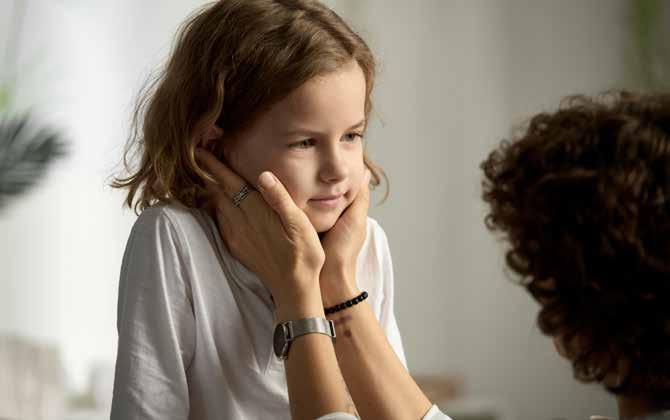
Family life is beautiful, but it can also get messy. At some point, every parent knows the feeling - a disagreement heats up between siblings, a tantrum erupts, or a simple misunderstanding spirals into a full-blown meltdown. In those moments, it’s easy to get swept up in frustration or worry. But what if the secret to calming the storm lies in something as simple as saying, “Let’s take a break”?
This gentle phrase holds surprising power. It invites everyone to pause, breathe and reset before things escalate further. More than just a timeout, it’s a compassionate way to teach children one of life’s most valuable skills - self-regulation.
When emotions run high, our brains are flooded with stress hormones. For kids, who are still learning to manage their feelings, this can feel overwhelming. Their “thinking brain” (the
part that helps with reasoning and decision-making) often takes a backseat to the “emotional brain,” which reacts instinctively to frustration, anger or fear. That’s why kids sometimes say or do things they don’t really mean in the heat of the moment.
Saying “Let’s take a break” is a way to slow things down. It creates space for the emotional storm to settle and for calmer, clearer thinking to take over. It’s an invitation, not a punishment, to step away from conflict and reconnect with ourselves. Taking a break is like hitting pause on a fast-forward button. It gives kids (and adults!) a chance to catch their breath, calm their racing thoughts, and return to the situation with a fresh perspective.
It’s important to understand what this phrase doesn’t mean. It’s not about shutting down communication or avoiding problems. It’s also not a tool for sending kids away as a form of discipline or exclusion.
Instead, it’s a calm, loving pause that acknowledges feelings without letting them take over. When used well, it reassures children that it’s okay to feel upset but also helps them understand that taking a moment to calm down is a healthy, respectful way to handle those emotions.
Self-regulation isn’t something kids are born knowing how to do. It’s a skill that develops over time with gentle guidance and practice. When you introduce “Let’s take a break” early and consistently, you’re helping your child build emotional intelligence, the ability to recognise, understand and manage their feelings.
Over time, this practice empowers children to notice their own triggers and choose healthy ways to respond, rather than reacting impulsively. It’s a lesson that extends beyond family squabbles and into friendships, school, and eventually, adult life.
When you sense rising tension, calmly suggest, “Let’s take a break and come back when we’re feeling a bit calmer.” Using a soft, nonjudgmental tone makes all the difference. It’s an invitation, not a command.
Kids respond better when they understand the “why.” You might say, “Taking a break helps our brains calm down so we can think clearly and solve the problem together.” This sets a positive frame around the pause, rather than making it feel like a time-out or a punishment.
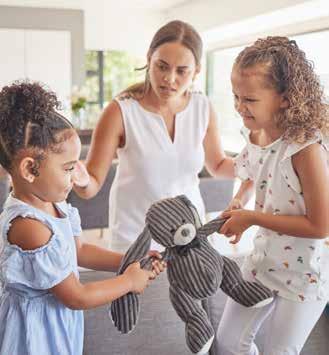
Set a time to reconnect
Breaks shouldn’t drag on indefinitely. Agree together on when and how you’ll come back to the conversation. For example, “Let’s take ten minutes and then talk again.” This helps children feel secure that the issue isn’t being ignored - it’s just paused.
The break is a chance for emotional reset, but it also teaches mindfulness, or the simple practice of noticing what’s happening inside and around us without judgment.
Encourage your child to check in with themselves during the break: “How am I feeling right now?” “What do I really want to say?” These moments of self-reflection are the building blocks of emotional maturity.
Sometimes kids might see taking a break as a way to avoid conflict or might resist because they want immediate resolution. That’s normal! Keep the tone gentle and reassuring. You can try:
• Offering choices: “Would you like to sit quietly for five minutes, or take a walk with me?”
• Validating feelings: “I know you’re upset, and that’s okay. Taking a break will help us both calm down.”
• Making breaks fun: Use a calm-down corner with soft pillows, books or sensory toys.
With patience and practice, kids begin to appreciate breaks as a helpful tool, not a punishment.
By inviting your child to pause and reflect, you’re teaching them to show themselves and the person they’re conflicting with kindness and patience. This is a powerful foundation for lifelong emotional resilience and healthy relationships.
The phrase “Let’s take a break” transforms difficult moments from power struggles into opportunities for growth and actually communicating how we feel without lashing out. It’s not about avoiding conflict, but about handling it with grace.
In the whirlwind of parenting, it’s easy to reach for quick fixes or to react out of frustration. But sometimes, the gentlest words, spoken with calm and care, can change the course of a tense moment entirely.
“Let’s take a break” is more than a phrase. It’s a compassionate tool that gives your child the space to understand and manage their emotions, while reminding them they are supported and loved, even in the stormiest moments.
Tired teens aren’t lazy - they’re growing, developing and navigating more than we realise.
If your teenager is constantly tired, struggles to wake up in the morning, or seems to sleep all weekend long, you’re not alone! Teenagers are often seen as night owls, staying up late and struggling to rise in the morning. To many parents, it can seem like their teens are simply lazy or addicted to screens. But there’s far more going on than meets the eye. The truth is that teens genuinely need more sleep than many people realise, and their internal clocks are wired differently from those of children or adults.
Understanding why teens sleep the way they do (and how we can support them), is often a game-changer for family life, emotional ease and even academic success. It’s about meeting them where they are developmentally, instead of expecting them to function like miniature adults.

Sleep plays a critical role during adolescence, a time marked by rapid physical, emotional and neurological development. While adults can generally function on 7 to 8 hours of sleep, teenagers typically need 8 to 10 hours each night to stay healthy, alert and emotionally balanced. Yet most teens fall short of this target, particularly during the school year when early start times clash with their natural biological rhythms. Studies actually show the average teen is getting far less, often around 6 to 7 hours on school nights. Over time, this sleep deficit adds up, affecting everything from their mood and memory to their immunity and school performance. In fact, research has shown that even losing just one hour of sleep a night can negatively impact a teen’s ability to learn new information the next day. That’s how sensitive their brains are at this stage.
One of the biggest reasons teens seem to stay up late and struggle with early mornings isn’t just screen time or Netflix (though those don’t help!). It’s biological. During puberty, the body’s sleep-wake cycle undergoes a shift. Melatonin, the hormone that makes us feel sleepy, is released later at night in teens than in children. This means they naturally start to feel tired later, often not until 11 pm


or midnight. Combine this with early school starts and academic pressures, and it’s no surprise that many teens are chronically sleep-deprived!
This mismatch between biology and routine is known as ‘social jetlag’, and it’s a major reason why teens may feel foggy, grumpy or exhausted during the week, and then sleep in on weekends to catch up. This pattern can make weekdays feel like a constant uphill battle - not just for them, but for the whole family. Recognising it as a biological challenge rather than a behavioural one can take some of the emotion out of morning struggles.
So why is it so hard for teens to get the sleep they need? The answer lies in a combination of biology and lifestyle. As their body clocks shift later, many teens struggle to fall asleep before 11 pm. Yet early school schedules demand that they wake up before their bodies are ready. Add in homework, extracurricular activities, social media and screen time, which can delay melatonin production even further, and you’ve got a recipe for chronic sleep loss.
Sleep deprivation in teenagers isn’t just about feeling groggy in the morning. It affects every area of their lives. Lack of sleep impairs memory, concentration and problem-solving skills, making schoolwork harder and more frustrating. It also contributes to mood swings, irritability and even symptoms of depression and anxiety. For teens already dealing with the social and emotional upheaval of adolescence, missing out on sleep can amplify these challenges.
The teenage brain is still under construction. Sleep supports memory, focus, decisionmaking and emotional regulation, which are all critical for school, relationships and everyday life. It’s also a time when teens begin forming their identity, making important social choices, and taking on more responsibilities - all of which require a wellrested brain.
Teens who don’t get enough sleep are more likely to experience anxiety, irritability and low mood. Chronic sleep deprivation has been linked to higher rates of depression and
emotional dysregulation. Sleep isn’t just rest, it’s emotional processing time. During REM sleep, the brain sorts through thoughts, stress and emotions, helping teens better handle the ups and downs of daily life.
Sleep boosts immunity, supports healthy weight and helps regulate hormones, including those tied to appetite, stress and puberty. Teenagers going through physical growth spurts need even more deep, restorative sleep to repair tissues and regulate energy levels. Without it, they’re more prone to fatigue, low energy and frequent illnesses.
Tired teens struggle with concentration, problem-solving and information retention. A well-rested brain simply learns better. Even highly motivated students can’t overcome a sleep deficit through effort alone - rest is the foundation for all higher thinking. Teachers often note that the biggest improvement in struggling students isn’t tutoring, but better sleep habits.
While some teens may tell you they’re tired, others may not even realise they’re sleep deprived. Keep an eye out for signs like:
• Difficulty waking up, even after what seems like enough sleep
• Relying heavily on caffeine or sugary snacks to stay alert
• Falling asleep in school or during quiet activities
• Irritability, mood swings or emotional outbursts
• Trouble concentrating or remembering things
• Sleeping much longer on weekends to ‘catch up’
If these behaviours are frequent, it’s worth gently opening a conversation around sleep habits. Try not to focus on blame or criticism - acknowledging their exhaustion without judgement is more likely to invite honest dialogue.
We all know telling a teen to “go to bed earlier” rarely works. But there are gentle ways to support better sleep. Importantly, talking openly with your teen about the importance of sleep can help them take ownership of their habits. Teens are more likely to follow healthy routines when they understand the why behind them. Framing sleep as a tool for better mood, stronger friendships, improved focus or sports performance might resonate more than simply saying, “You need more sleep.”
Encourage a routine that supports regular wake-up and wind-down times (even on weekends!). Too much weekend sleep-in can make Monday mornings even harder. Even if you can’t shift bedtime, keeping wake-up times relatively stable can help regulate their internal clock over time.

Blue light from phones and tablets delays melatonin, the hormone that tells us it’s time to sleep. Try a no-screens rule an hour before bed, or at least suggest using night mode settings. Some families find success with a household ‘charging station’ in the kitchen, where phones go to sleep too, removing the temptation altogether.
A dark, quiet and cool room supports better sleep. Consider blackout curtains, a white noise machine or even a calming bedtime playlist. If your teen shares a room or has distractions like pets or siblings, look for creative solutions to give them a calm corner to wind down.
Journaling, reading, a warm shower or herbal tea can all help teens unwind. Having a routine sends cues to the brain that it’s time to rest. You could even make it a bonding opportunity, perhaps listening to a short guided meditation together, or sharing a sleepy herbal tea in the kitchen.

Be mindful of after-school commitments
Back-to-back activities, late-night studying or jobs can eat into precious sleep time. Help your teen prioritise where needed. They may need support learning to say no or scaling back, which are skills that will serve them in adulthood too.
Rather than making it a rule, talk about how better sleep helps with energy, skin, mood and memory. Teens are more likely to buy in when they understand the ‘why’. You might even suggest doing a one-week sleep experiment together, tracking how their energy, mood and focus improve with just an extra 30-60 minutes of rest.
Sometimes persistent fatigue can signal something deeper, like low iron, thyroid issues, anxiety or depression. If your teen is getting enough sleep but still seems constantly exhausted, it’s worth a chat with your GP or a paediatric sleep specialist to rule out any
underlying causes. Sleep apnoea, while more common in adults, can also affect teens, particularly those who snore heavily or have restless sleep. Don’t hesitate to investigate further if your instincts say something’s not right.
It’s easy to assume teenagers should simply “snap out of it” when they’re tired, grumpy or can’t get out of bed. But understanding the science behind their sleep patterns helps us replace frustration with empathy, and actually offer practical support. Sleep isn’t something they’ll just “catch up on later.” It’s a powerful tool for growth, learning, and emotional wellbeing - right now, when they need it most.
Ultimately, supporting your teen’s sleep isn’t about enforcing strict rules or removing their phones at 9pm. It’s about creating an environment that respects their needs and helps them build lifelong habits. Teenagers today are under a lot of pressure, from school demands to social expectations, and good sleep is one of the best gifts we can offer them. By working with your teen to build better habits, adjust their expectations and protect their rest, you’re not just helping them sleep better. You’re supporting their health, confidence and success in a time of life that’s already full of challenges and change. With your encouragement, teens can learn that sleep isn’t something to sacrifice, but something to value.


The Brain & Performance Centre makes waves; a readiness checklist for little ones starting school and more!
We look at Miral’s “Farming in Schools” initiative - a brilliant mix of hands-on learning and environmental awareness aimed at nurturing a new generation of sustainability champions.
Miral, the leading creator of immersive destinations and experiences in Abu Dhabi, has successfully led out on its “Farming in Schools” initiative. This community-driven educational programme involved partnering with Abu Dhabi Municipality to engage 120 students from four schools in a three-month sustainability effort.
Pupils from Yasmina British Academy, Mamoura British Academy, Yas American Academy and the International School of Choueifat rolled up their sleeves to plant and care for over 2,500 plants - gaining real-life experience in growing food, understanding ecosystems and learning how small actions can make a big difference.

The initiative falls under the Environment, Education, and Skill Development pillars of Miral’s Group CSR Strategy. It reflects the organisation’s commitment to driving long-term environmental awareness and equipping future leaders with the tools and mindset needed to contribute to a greener, more resilient tomorrow. It’s not just about the present - Miral hopes that by embedding eco-conscious habits early on, children will carry these values into adulthood, becoming informed decision-makers who champion sustainable development at home, school and eventually in the workplace.
Beyond the classroom, the programme included structured follow-up assessments to reinforce its principles and track progress, ensuring students stayed connected with their green goals long after the final harvest.
At its heart, “Farming in Schools” is about nurturing more than just crops - it’s cultivating a generation that cares deeply about the planet. By growing a greater understanding of the natural environment and encouraging tangible contributions to the UAE’s sustainability goals, the initiative aligns with the UAE Green Agenda 2030 and supports the national push for sustainable living through the Year of Sustainability.
It also aligns with the UAE’s Year of Community 2025 and underscores Miral’s belief in the power of purposeful education to shape values, encourage climate action and support the region’s vision of building a sustainable knowledge-based economy.
A Dubai-based centre is making waves on the international stage - by putting people at the heart of cutting-edge science.
The Brain & Performance Centre, a DP World company, and its CEO, Dr. Craig Cook, have been recognised with top honours at the prestigious International Prime Awards, celebrating their pioneering work in redefining modern healthcare, rehabilitation and learning support for children. The centre, which offers customised and comprehensive assessments and treatments for children and youth with various pediatric neurological conditions, is making waves in the world of rehabilitation, brain health and learning support for all young people. These accolades mark a proud milestone not just for the centre, but for the families who have witnessed their children make remarkable strides thanks to its personalised, compassionate approach.
The Centre was awarded the Excellence In Cognitive And Physical Performance Optimisation Award, reaffirming its position as a global leader in integrated brain and physical health. Its personalised treatment


protocols - rooted in hyperbaric oxygen therapy (HBOT), cognitive rehabilitation, physical conditioning, and targeted nutritional strategies - are designed to help young individuals recover from neurological, developmental or physical challenges and achieve optimal performance.
Rather than relying on one-size-fits-all care, each plan is shaped around the individual child’s strengths, needs and goals.
Dr. Craig Cook received the Human-Centric Healthcare Leadership Award, recognising his visionary approach to combining cuttingedge science with deeply personalised care. Under his leadership, The Brain & Performance Centre has become a soughtafter destination for holistic, outcomefocused protocols that enhance both the cognitive and physical wellbeing of children.
“These awards are a reflection of the exceptional commitment of our entire team and the life-changing outcomes we see every day,” said Dr. Craig Cook. “Our mission is to empower each individual - whether they’re recovering from adversity or striving to push their limits - to realise their full potential.”
The honours underscore the UAE’s growing prominence as a hub for advanced medical innovation and reinforce The Brain & Performance Centre’s role in shaping the future of healthcare - the centre has become a go-to destination for families of children with diverse needs seeking science-backed care with a human touch. In a region where demand for tailored, high-quality pediatric care continues to grow, this award-winning centre offers not just hope, but real, measurable progress for children and peace of mind for parents.
In a world where health often feels rushed and impersonal, The Brain & Performance Centre is a reminder that truly transformative care begins with empathy, expertise - and a bold vision for what healthcare can be.
Beyond new uniforms and packed lunch ideas, how can you tell if your little one is truly ready for the classroom?

School readiness goes far beyond knowing the alphabet or being able to count to ten. It’s about emotional confidence, communication skills, curiosity, independence and the ability to manage routines. The good news is that many of these skills develop naturally through everyday play and family life.
Here, we walk through a practical checklist to help you prepare for next month - and to celebrate all the little ways your child is growing and thriving.
Can your child separate comfortably from you for a few hours? It’s natural for children to be a little anxious when starting school, but over time, most are able to wave goodbye and settle into a classroom with the help of a caring teacher. If your little one struggles with separation, try short practice runs - perhaps staying with a grandparent or friend for a morning. Books and conversations about starting school can also help make the transition feel familiar and exciting.
Can your child manage basic self-care without constant help? Teachers don’t expect perfection, but a little independence goes a long way. Helpful skills include:
• Going to the toilet alone and washing hands properly
• Putting on and taking off shoes, a jumper or jacket
• Eating lunch or snacks without assistance
• Packing away toys or belongings
You can build these habits through daily routines over the coming weeks - like getting dressed together in the morning or packing a small bag before outings.
Can your child express their needs, ideas or feelings clearly? Your son or daughter doesn’t need a huge vocabulary - but being able to ask for help, share thoughts and listen to others is key. School involves group activities, following instructions and interacting with both peers and teachers. You have some time to encourage this at home by chatting throughout the day, asking open-ended questions and playing pretend games. Reading aloud together is also a great way to build language skills and spark conversation.
Does your child play well with otherseven if it doesn’t always go smoothly? Sharing toys, taking turns and handling disagreements are all part of the school experience. Your little one may not get it right every time, but the ability to join group play and cooperate with others is important.
Playdates, nursery settings and playground meetups offer easy chances to practise. Role-playing “What to do if…” scenarios can also help your child build up their confidence and kindness in preparation for the new school term ahead.
Does your child show interest in new things - or enjoy exploring, even if they don’t know the ‘right’ answer? School is a place of discovery. Kids who are curious, ask questions and enjoy stories, puzzles or imaginative games tend to transition well into classroom learning.
You can nurture this by encouraging wonder, asking things like “What do you think will happen if…?” or “Why do you think the caterpillar turned into a butterfly?” Simple science kits, sensory play or nature walks can also sow the seeds of that love of learning early on.
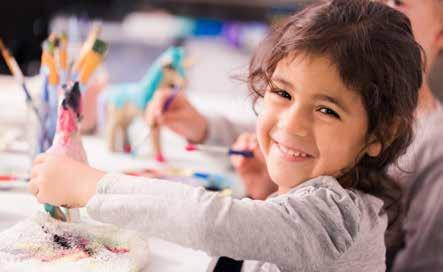
Can your child sit and focus on a task for a short period of time? This doesn’t mean sitting still for hours - but being able to listen to a story, follow two-step instructions, or stay with a drawing or puzzle for ten minutes is a great sign.
Creating short home routines, like tidy-up time, snack time or a mini “circle time” with books and songs, helps prepare your child for the flow of a school day.
Can your child use their hands confidently - and move their body with coordination? Fine motor skills include things like holding a crayon, using scissors, or opening lunch containers. Gross motor skills involve running, climbing, hopping and balancing. You may find it helpful to set your child up to play with playdough, threading beads, stacking blocks or scribbling. Climbing at the playground, riding a scooter or dancing around the living room all help, too!
Does your child respond well to simple rules and understand that actions have consequences? School involves group rules and routines. Children who can stop when asked, wait their turn, or understand “no” or “later” find it easier to adjust to this structure.
This is something many parents worry about! Consistency is the key. Use gentle language like, “We wait our turn” or “That toy isn’t safe to throw - let’s try this instead.” Stick to praising behaviour you’d like to see more of and explain the ‘why’ behind rules whenever possible.
Does your child believe they can try something new - even if it feels a little tricky? Confidence grows through encouragement, problem-solving and small wins. When your little one figures something out on their own or copes with a small setback, they build resilience. So, celebrate their effort, not just their results! Try sentences like “I saw how hard you worked on that puzzle!” or “It’s okay to be nervous - you’re being really brave.” You may be surprised how much of a difference it can make to kids’ confidence!
Every child is different and readiness doesn’t look the same for everyone. Some will race through the school gates; others will need more time and reassurance. This checklist isn’t a pass or fail - it’s a guide to help you spot strengths, notice gaps and gently support your son or daughter as they step into a new chapter.
The benefits of a staycation before school begins and the secret beauty of Oman’s Green Mountain!


Make the most of the final days of summer with a spontaneous local getaway to reset, reconnect and rechargejust in time for the back-to-school rush.

As the summer holidays begin to wind down, many families find themselves caught between the lingering heat and the looming return to routine. The new school term brings with it early mornings, packed calendars and a shift in pace that can feel abrupt. That’s where a spontaneous staycation comes in - a last-minute local break that offers all the benefits of a getaway without the fuss of travel.
In a city like Dubai, where five-star resorts, beach clubs and family-friendly attractions are right on your doorstep, a staycation can feel every bit as indulgent as a trip abroad. With less time spent planning and packing, families can switch into relaxation mode almost immediately. Whether it's checking into a coastal resort or booking a cosy desert retreat, the focus becomes rest and reconnection - something many families crave after weeks of playdates, camps and screen-time negotiations.
A short escape can also provide a gentle transition back to structure. Choosing a hotel that offers family wellness experiences, kid-friendly dining and creative activities can help ease little ones into the rhythm of a new term, while also giving parents a chance to recharge. From splash pads and supervised clubs to yoga classes and early morning nature walks, there’s something for everyone, without needing to go far. Many resorts now even offer “mini-mindfulness” or back-to-school prep sessions for kids, subtly weaving wellness and confidence-building into the fun.
Staycations also remove the added stress of long-haul travel or airport logistics, which is especially valuable in the final days before school starts. No jet lag, no time zone shifts - just a smooth, simple pause before the pace picks up. Plus, many hotels and resorts offer excellent last-minute deals during this shoulder season, making a quick getaway more affordable than you might expect.
There’s also an emotional benefit. A brief change of scenery, even within your own city, can help refocus the family dynamic. Shared meals, uninterrupted pool time and the novelty of new surroundings often lead to the kind of time that gets lost in the busy day-to-day. Children thrive on attention and connection, and a short break can help them feel grounded and secure as they prepare to return to the classroom.
So if you’re looking for a way to mark the end of summer with calm rather than chaos, a last-minute staycation might be just the answer. It’s a chance to breathe, reset and walk into the new term feeling refreshed - not frazzled. And who wouldn’t want that?

Discover cool mountain air, family-friendly adventures and meaningful moments at Hotel Indigo Jabal Akhdar - Oman’s hidden gem in the clouds.
When the desert heat shows no sign of easing, families across the GCC start hunting for an escape - a breath of fresh air, quite literally. But what if that escape didn’t require long-haul flights, exhausting layovers or complicated itineraries? Tucked high in the Al Hajar Mountains, Hotel Indigo Jabal Akhdar Resort & Spa offers the kind of summer getaway that doesn’t just deliver cooler temperatures - it delivers experiences your family will remember for years to come.
At 2,000 metres above sea level, this boutique retreat is nestled in one of Oman’s most dramatic natural landscapes. Known as the
“Green Mountain,” Jabal Akhdar is famous for its terraced farms, ancient villages and deep-rooted traditions, all surrounded by panoramic mountain vistas and clean, crisp air that’s often up to 15 degrees cooler than the lowlands. It’s an entirely different side of the region - one where nature, culture and wellness are in abundance.
Hotel Indigo Jabal Akhdar doesn’t just cater to travellers - it welcomes families with open arms. Its unique design is a reflection
of local Omani culture and the landscape - from damask roses and pomegranates, to traditional architecture and artisan craft motifs - its interiors are inspired by local art and handicrafts. The atmosphere is warm, relaxed and completely unpretentious, allowing children to roam comfortably while adults unwind in peace.
Rooms are spacious and thoughtfully arranged, many with private balconies overlooking jagged cliffs and lush orchards. It's the kind of place where mornings begin with birdsong, not traffic, and where you’re more likely to hear a goat bell than a phone notification.
For those wanting to make the most of their stay, the resort’s “Stay a Little Longer” offers are worth considering. Whether you're planning a short escape or an extended recharge before the school routine kicks back in, these generous packages - like “Stay 3 Nights, Pay for 2” or “Stay 6 Nights, Pay for 4” - allow for a guilt-free extension of your holiday bliss.
While kids might be drawn to outdoor adventures, parents can retreat to Jala Spa & Wellness for some much-needed restoration. The “Wellness Escape” package includes a 60-minute body therapy treatment, weekly yoga and meditation sessions, and a serene mountain-view room designed for true relaxation. It’s a chance to recalibrate your body and mind - without ever leaving the resort.
And unlike many wellness experiences, this one doesn’t exclude families. Older children can join simple yoga flows or nature walks, while younger kids are free to enjoy the resort’s open-air spaces, shaded terraces and small surprises woven throughout - think playful design elements, local crafts and even the occasional mountain goat sighting.
Venturing beyond the resort reveals the real magic of Jabal Akhdar!
One standout is the Three Village Walk, a guided tour through the mountain hamlets of Al Ain, Al Aqar and Al Shreija. Along the way, you’ll pass ancient falaj irrigation channels, terraced pomegranate orchards and quiet stone homes. Children will love learning about traditional farming methods and spotting wildlife along the trail, while adults can take in the breathtaking views and local stories that bring the mountain to life.
Another highlight is the Rose Water Factory Tour, which offers a fascinating look at one of the region’s most treasured traditions. Depending on the season, families can even witness rose petals being distilled into fragrant oils using centuries-old methods. It’s educational and immersive - perfect for curious young minds!
For thrill-seeking families, the Via Ferrata is a must-try. This guided mountain-climbing adventure involves a series of steel cables, suspended bridges and heart-pounding moments, set safely against some of Oman’s most jaw-dropping scenery. It's suited to older kids and teens, and promises to be an unforgettable family experience.
Back at the resort, meals are anything but ordinary. If you prefer either dining al fresco under the stars or sharing warm, oven-fresh


bread indoors, the culinary offerings blend international favourites with Omani flavours in ways that are both approachable and exciting.
Breakfasts are generous and locally inspired, featuring honey from the mountains, warm za’atar breads, fresh fruits, and yoghurt made with regional herbs. For lunch and dinner, families can choose from comforting classics or regional specialties - perfect for those keen to introduce their children to new tastes in a relaxed, supportive setting.
Perhaps what makes Hotel Indigo Jabal Akhdar so compelling is the way it turns a summer break into something meaningful. It doesn’t just offer a cooler climate - it offers perspective. From hiking with your loved ones together at sunrise to stargazing from the balcony at night, or simply playing a board game while the clouds roll past the cliffs, this is a place that brings people together. There are no crowds, no queues and no rush. Just the simple pleasures of fresh air, nature and quality time.
If you're based in the GCC, reaching Jabal Akhdar is refreshingly simple. The resort is a scenic two-hour drive from Muscat International Airport, or just over five hours by road from Dubai. You’ll trade glass skyscrapers and city lights for winding roads, dramatic cliffs and the scent of juniper trees. Once you arrive, time seems to stretch out in the best way. There's no pressure to do anything, and yet so many experiences on offer that each day feels full in its own gentle rhythm.
So, if you’re looking to close out the summer with a refreshing reset before the return of school runs and work emails, a family escape to Hotel Indigo Jabal Akhdar might be just what you need. It’s a rare find - peaceful, playful and perfectly placed to remind us all that slowing down is sometimes the greatest adventure of all.

Tips to keep your space free of bugs, heat and sand; how to set up your garden for summertime play and more!
Get ahead of the back to school chaos with simple, practical tips to organise your homeand your mornings - for a smoother, stressfree start to the new school year.

The back to school rush can feel like a whirlwind - uniforms to wash, lunchboxes to pack, permission slips to sign and those elusive missing shoes to track down. As the holidays come to a close, getting your home organised can go a long way in creating a calmer, smoother start to the new term for the whole family. With just a little planning, your home can become a space that supports your child’s success and your own peace of mind.
Create one central spot for all school-related items - think bags, books, water bottles and sunhats. Whether it’s a hallway shelf, a basket by the door or a few hooks on the wall, having everything in one place helps mornings feel less frantic.
You may like to add a simple checklist or visual chart nearby for younger children to follow, so they know what to grab before heading out the door.
Start by reviewing your breakfast setup. Are bowls, spoons and cereals easy to access? Could a tray or caddy help group breakfast items together? Mornings flow more smoothly when your family’s essentials are within reach.
Next, consider setting out uniforms the night before - this tiny habit can save huge amounts of stress when time is tight. A labelled drawer or weekly organiser might also help kids feel more empowered when choosing their clothes for each day.
Whether it’s a corner of the dining table or a little desk in their room, having a designated space for homework encourages your child’s focus. Stock it with pencils, paper, scissors and a charger if needed - all within easy reach.
It’s best to keep distractions like toys or screens away during homework time and make it a calm, well-lit space. Even a small area can make a big difference!
Avoid the last-minute scramble by checking your supplies now. Go through what you already have and make a list of what’s still needed. A small box or drawer labelled with your child’s name can help keep their pens, notebooks and supplies from vanishing midweek.
And don’t forget lunchboxes and water bottles - it’s worth having a spare or two to avoid panicked washes late at night.
A visible calendar in the kitchen or hallway can be a lifesaver. It’s handy to include school events, PE days, after-school clubs and deadlines. If your child is old enough, let them add their own notes too - it helps build up their independence and responsibility.
Organisation doesn’t need to be perfect - it just needs to work for your family. The goal isn’t a spotless home, but a functional one that supports your little one and reduces your daily stress.
With a bit of preparation, the school year can start on a calm, confident note - and that makes all the difference!

Simple, clever ways to keep your home cool, clean and comfortable this summer - especially when children are involved.

As lovely as long sunny days can be, summer in the UAE also brings some less welcome visitors - sticky heat, sandy footprints and more than a few flying bugs. Whether you're coming home from the beach, hosting family over the holidays or just trying to stay cool indoors, a little smart planning can go a long way in keeping things fresh and fuss-free.
When beach trips or park days become regular fixtures, so do trails of sand across your floor. Regardless of if it’s from the beach or the garden, sand has a way of making itself at home in your living room. One simple solution is to set up a 'sand station' outside your front or
back door. A sturdy mat for shoes, a bench for changing and a soft brush or baby wipes for sandy feet can help little ones rinse or dust off before heading inside.
If you’ve got the space, keep a lidded basket outdoors for sandy shoes and flip-flops and encourage everyone to go barefoot or switch to indoor slippers once inside. It’s a quick swap that saves a lot of sweeping.
Not every home can be ice-cold, but there are ways to bring the temperature down without running the AC all day. Start by drawing

curtains or blinds in sunny rooms during peak hours, especially if they get the afternoon heat. Choose light-coloured, breathable fabrics for bedsheets and cushion covers, and swap rugs or throws for cotton or bamboo textures that feel cooler underfoot.
Ceiling fans or portable air circulators can work wonders too, when placed near windows at dusk or dawn to draw in cooler air.
Mosquitoes and flies love the warm weather just as much as we do - and there are gentle ways to keep them out. Firstly, try fitting mesh screens to windows and balcony doors so you can enjoy the breeze without the bites.
Adding a few natural repellents around the house can also help. Think citronella candles on the terrace, eucalyptus oil in a diffuser or pots of lavender, basil or mint on your windowsill - all of which gently discourage bugs, while smelling great. For little ones, stickon patches and roll-on repellents are safer alternatives to sprays.
If you’re in and out all day, consider turning a corner of your hallway into a ‘summer drop zone’. Hooks or baskets for hats, sunglasses and water bottles can save so much time during busy mornings. Having a small tray for sunscreen and insect repellent also makes it easier to apply right before heading out - and serves as a gentle reminder for kids who love to dash off unprepared!
Summer brings so many moments to enjoy, but it’s easier to embrace them when your home is coping with the season. With a few thoughtful touches, you can create a space that keeps out the mess and lets your family make the most of these long, golden days.
With summer heat at its peak, finding ways to keep children cool, active and entertained is on many parents’ minds! Here’s how to make the most of your outdoor area.
With just a few easy updates, you’ll create a safe, shaded sanctuary where kids can play, splash and relax - even during the hottest months.
When it’s hot, water play is always a hit. An inflatable paddling pool or a sprinkler system is simple to set up in a shaded spot, offering your little ones instant relief and entertainment. For toddlers, plastic splash mats or shallow water trays are safer alternatives and can be filled and cleaned with ease.
Take things further by creating a water play station with buckets, sieves, jugs and funnelsperfect for some fun sensory exploration and cooling off.
Even in warm weather, kids need space to move, so shaded active zones are essential. You might try placing a canopy over a sandpit or climbing frame to encourage role play without risking sun exposure.
Balance beams, tyres or tunnels tucked into shaded spots also offer brilliant opportunities for climbing, crawling and coordinationbuilding. Look for low-impact equipment that suits your child’s age and development, and remember - a little shade goes a long way.
As many parents will know, between bursts of energy, children often need chill-out spots to read, rest or daydream. A shaded nook with floor cushions, outdoor rugs and beanbags makes for a gorgeously calm space for quiet play. If you’re feeling aesthetic, hang some fairy lights or bunting to make the area feel magical and welcoming.
Hammocks or swing chairs are also great for gentle movement and a cool breeze - ideal for

siestas or cuddles. For younger kids, pop-up tents or teepees stocked with soft toys and picture books also create a cute retreat away from the sun.
Subtle features can keep your garden feeling workable even when the temperature peaks. Misting systems – whether attached to fences, pergolas or parasols – offer a fine cooling spray that children love to run through.
Consider adding a fan near your seating area or use solar-powered coolers to circulate air gently. For an easy cool-down, simply freeze sponges or pop a few ice packs inside planters to create surprising cold spots for kids to discover.
A small garden doesn’t have to feel limiting. Portable play equipment like scooters, fold-up
tunnels, ride-ons or chalkboards lets you change up activities throughout the day. You could even create a ‘play menu’ for children to choose from - perhaps art in the morning shade, splash time after lunch and story time under the trees later on.
Firstly, be sure to anchor your climbing frames and shade structures securely and check your hard surfaces for heat and slip hazards regularly. Secondly, a simple ‘sun safety station’, complete with sunscreen, hats, cold drinks and reusable water bottles on hand, is a smart little tool to avoid burning. Lastly, don’t forget to build regular ‘shade breaks’ into the day!
A child-friendly summertime garden is all about activity and rest, fun and function, sun and shade - and most of all, great times!
Managing your child’s fear of animals and tips for introducing pets to your little one.
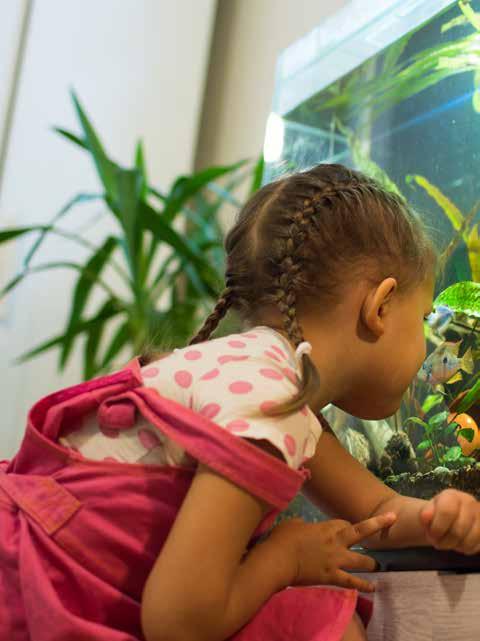
Tips to make your child’s first connection fun, calm and confidence-building.

Whether it’s a floppy-eared puppy, a curious kitten or a low-key hamster, bringing a pet into your home is a big and exciting step - especially for little children. Animals can teach kids empathy, responsibility and patience, but those early interactions are key in setting the tone for a safe and happy bond.
Here are five thoughtful ways to help children feel comfortable, confident and caring around their new furry (or feathered!) family member.
Before your new pet even arrives, start by talking to your child about what to expect. Picture books, gentle cartoons or even short videos can help kids understand how different animals behave, what they need and how to treat them kindly.
Keep the tone light and positive though - this isn’t about rules or pressure, just helping your child feel informed and included.
The first face-to-face meeting should be quiet, short and supervised. Let your new furry friend explore the space while your child sits nearby, watching quietly. It may be helpful to encourage your little one to stay still and use soft voices - no sudden hugs, grabs or loud squeals (as tempting as they may be!).
If your child is nervous, let them observe from a safe distance. Watching you interact calmly with the pet will help build their confidence.
Involving children in pet care helps build a gentle sense of responsibility. Just be sure to start with simple, age-appropriate tasks, such as filling the water bowl, brushing your animal’s fur gently, or helping pick out toys. Keep it playful and praise your child’s efforts. The goal here is to create a sense of connection, not the feeling of having to do a chore.
Demonstrating how to stroke, hold or speak to a pet is often more effective than simply explaining it, especially if you have smaller children. All you need to do is gently show your child how to approach slowly, hold out a hand or use a quiet tone. Once they’ve seen you do it a few times, ask your son or daughter to give it a go - with lots of reassurance and support of course!
It’s important to teach children that pets, like people, sometimes need a little space. If the pet walks away or hides, explain that they might be tired or shy - and that it’s absolutely okay. By learning to recognise and respect these signals, kids develop empathy and build trust with their pet over time.
Introducing a child to a pet doesn’t have to be perfect, it just needs to be patient, calm and kind. With a little guidance and lots of love, those first moments can grow into a beautiful bond that lasts for years to come!
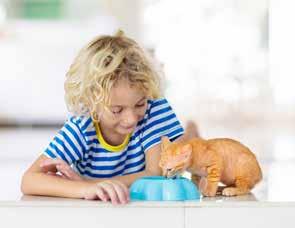
Helping little ones
Not every child is a natural animal lover. While many kids squeal with delight at the sight of a puppy or kitten, others might freeze up, hide behind your leg or even burst into tears. Whether it’s a wagging tail, flapping wings or loud bark that sends them running, fear of animals is more common than you might think - and totally normal, especially in younger children.
With some gentle guidance and a little patience, it’s absolutely possible to help your child feel more at ease around furry, feathered or even scaly friends. Let’s take a look at how you might begin breaking down this fear.
If your child is afraid of animals, it’s important to avoid brushing it off or forcing interaction. Their fear might seem irrational to you - especially if the animal is small, friendly or familiar - but to your little one, it feels very real. Start by acknowledging their feelings by saying something like “You don’t like how loud that dog is, do you? It’s okay to feel a little scared.” This simple validation can go a long way for kids. Once they feel heard and understood, they’re more likely to be open to gentle exposure and support.
Sometimes, a child’s fear stems from a specific experience - like being knocked over by an excitable dog or scratched by a cat. Other times, it's learned behaviour from a parent, sibling or even something they’ve seen on TV. To work this out, maybe ask open-ended questions to understand what worries your little one most. This could be “Is it the barking that bothers you, or when dogs jump?” or even, “Do you feel nervous around all animals or just some?” Knowing what’s behind the fear helps you tailor your approach and avoid overwhelming your child.
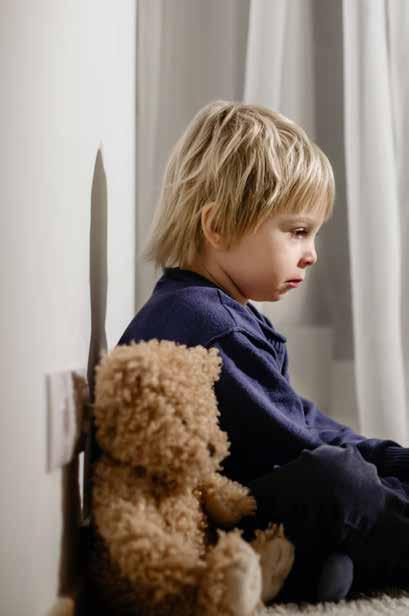
Overcoming fear isn’t about diving in head-first. It's about creating safe, positive experiences in manageable doses. You might start by simply looking at pictures or books about animals together, pointing out gentle traits - such as soft fur, wagging tails, kind eyes. Next, try watching calming animal videos or visiting a pet store to observe animals from a safe distance.
If a friend or family member has a pet, you might like to arrange a quiet, low-pressure visit. The best approach is to keep your child in controlthey can watch, ask questions or just hang back. Just be sure to let them lead and avoid urging them to touch or interact until they’re ready.
As we know well, children often take emotional cues from the adults around them. If you tense up when a dog approaches or recoil from a cat, your little one will pick up on that anxiety - even if you're trying to hide it. When you're around animals, do your best to model calm and confident behaviour. Speak in a steady voice, move gently and show affection in a

way your child can see. You might say, “Watch how I give the dog a gentle pat. See? He’s wagging his tail because he likes it” - and just generally showcase ease around animals.
Much of a child’s fear stems from unpredictability. Animalsespecially energetic ones - can move quickly or make unexpected noises, which can be alarming. It can be game-changing to help your child understand the body language around how animals communicate. Explain that a dog with a wagging tail and relaxed ears is friendly, or that a cat hiding under the sofa probably just wants some space. The more your child understands an animal’s signals, the less scary and more predictable they become.
It’s fantastic to give your child lots of opportunities to observe animals, ask you questions and engage at their own pace. Let them decide if and when they’re ready to get closer, pet an animal, or feed it a treat.
Respecting their boundaries shows them they’re in control of their comfort - a key part of overcoming fear. Even if your little one wants to stay across the room during a visit to a friend’s house with a dog, that’s okay. Celebrate progress, no matter how small.
Even with the best intentions, surprising your child with a puppy to “help them get over it” can backfire. So can using animals to teach lessons like “Don’t be silly” or “See, nothing bad happened!”
Fear doesn’t disappear with logic or pressure. It eases with trust, time and consistent positive experiences.
Children’s books, movies and cartoons often feature animal characters that are kind, funny and relatable. This is the perfect jumping off point for you to use these stories to spark gentle curiosity - and even empathy. You can discuss how animals feel, what they need, and how we can care for them using favourite characters. Stories are powerful. They can help shift fear into fascination - and eventually, fondness.
If your child’s fear is very intense or affects daily life (like refusing to visit friends who have pets, or becoming distressed at the park), it may be worth chatting to a child psychologist or counsellor. They can help unpack deeper fears and guide you with a tailored approach.
Not every child grows up to be a pet lover - and that’s okay. However, by helping them understand animals and supporting their comfort and confidence, you’re giving kids the tools to manage fear, grow empathy and navigate the animal world with a little more courage.

The Editor’s handpicked guide to your child’s school essentials!

There’s something about the back-to-school season that feels like a fresh start - for kids and parents. Whether you’re waving them off to their first day of nursery or packing up lunchboxes for another year of learning, this month calls for gear that makes mornings easier, bags lighter and snacks smarter. From comfy uniforms to cute backpacks and healthy lunches that work for everyone, I’ve rounded up my favourite picks to help your family start the term in style.
It’s no secret that school mornings can be a bit hectic. That’s why I’m loving Marks & Spencer’s school collection, which takes the hassle out of uniforms. Think durable cotton fabrics that are breathable and easy to wash, plus StayNEW™ and Easy Iron technology that keep clothes looking sharp with minimal effort from you. Multipacks like the 3-pack Girls’ Easy Iron Shirts or





2-pack Boys' Non-Iron School Shirts mean you always have a spare on hand for surprise spills or paint mishaps.
Smart features like high-quality zips, smooth button fastenings and crease-resistant finishes take the stress out of dressing. Also don’t miss the comfy footwear options - girls will love the leather Freshfeet™ loafers, while boys stay supported in Leather Toe Bumper School Shoes with Insolia Flex® cushioning.
Say goodbye to soggy sandwiches and hello to stylish lunch gear that keeps food fresh and kids excited to eat.
Citron
Parent-led brand Citron delivers again with its Best Year Yet collection, bringing back stainless steel food jars in prints like Stormy EDITOR’S BACK-TO-SCHOOL PICKS Your ultimate guide to school style, smart snacks and lunchbox heroes!




Unicorn and Cool Kid. Their brand-new duffle bag is a win for after-school clubs, day trips, or even a weekend with the grandparents.
French favourite Béaba keeps things sleek with its stainless steel Thermo-Portion containers - double-walled, chemical-free and leak-proof. Whether your child prefers warm pasta or cold fruit salad, this container keeps it just the way they like it.
Meanwhile, Done by Deer brings a fresh Scandinavian vibe to the market with its adorable, animal-themed backpacks, lunch bags and snack containers. The soft colour palette and playful designs make them a great pick for little ones starting school for the first time.
And if you’ve got a child who treats lunchtime like a social event (don’t they all?), Skip Hop is ready. Their Zoo Spark Style collections introduce cheerful characters like the Octopus and Hedgehog, while the Wander Collection packs serious function into fun gear - complete with a backpack, stainless steel straw bottle and pencil pouch in one stylish trio.

When it comes to back-to-school footwear, comfort is key - but we’re not willing to compromise on style. Thankfully, ECCO has it all. The Danish brand’s back-to-school collection is made with growing feet in mind. From loafers to ballerina flats, each pair is crafted from soft, premium leather with breathable textiles, flexible soles, and excellent arch support.
We especially love ECCO’s FLUIDFORM™ Direct Comfort Technology, which adapts to the movement of your child’s foot throughout the day - meaning no sore feet after P.E. or the school run. Sizes range from 27 to 35, so even your older kids are covered.
Healthy snacks don’t have to be boring. M&S proves that with its Eat Well range, marked by a simple flower symbol to help parents make better choices without reading every label. Whether it’s the fruity tang of a Raspberry & Almond Butter Pressed Bar or the crunch of Smoky BBQ Popped Chips, these are snacks kids will actually eat - and you’ll feel good packing.
Tuck a Classic Fruit Salad or a bag of Soft Prunes into their lunchbox for a natural sugar boost, or send them off with a Nutriment Nut Mix for lasting energy.
Let’s face it - kids want gear that shows off their personality and backpacks are no exception. Skip Hop has you covered with their Duff-imals (think bunny, dino and hamster duffels) and bold new Spark Style Train prints that are guaranteed to get a smile at drop-off.
Done by Deer’s canvas backpacks bring an aesthetic, modern edge - perfect for parents who want cuteness without the cartoon overload. Meanwhile, Citron’s new duffle and their ever-popular insulated lunch bags mean your kids will have the coolest setup in class.
And for those thoughtful extras - whether it’s a handmade pencil case, personalised notepad, or a thank-you gift for a teacherMINT Market is my recommended go-to. Every product is made by a UAE-based small business, so your purchases also support local makers. Expect artisanal stationery, desk décor with flair and even a little something for mums. After all, you deserve a gift too!
Whether you’re prepping for the school bell or just trying to reclaim your routine, this season’s lineup of back-to-school picks has something for every age, stage and schedule. Smart, stylish and school-ready - just the way we like it.

